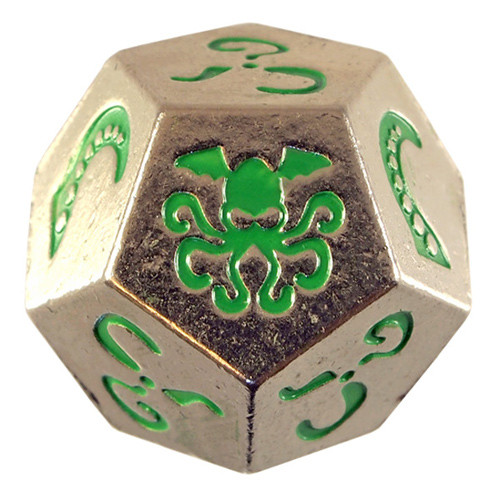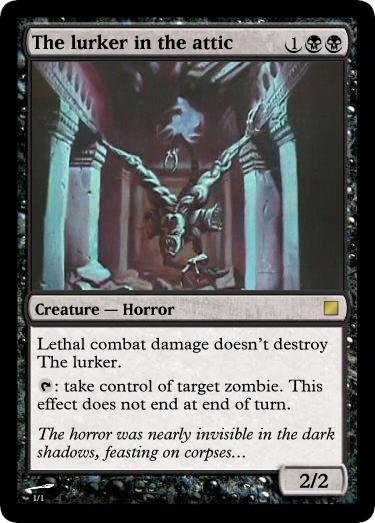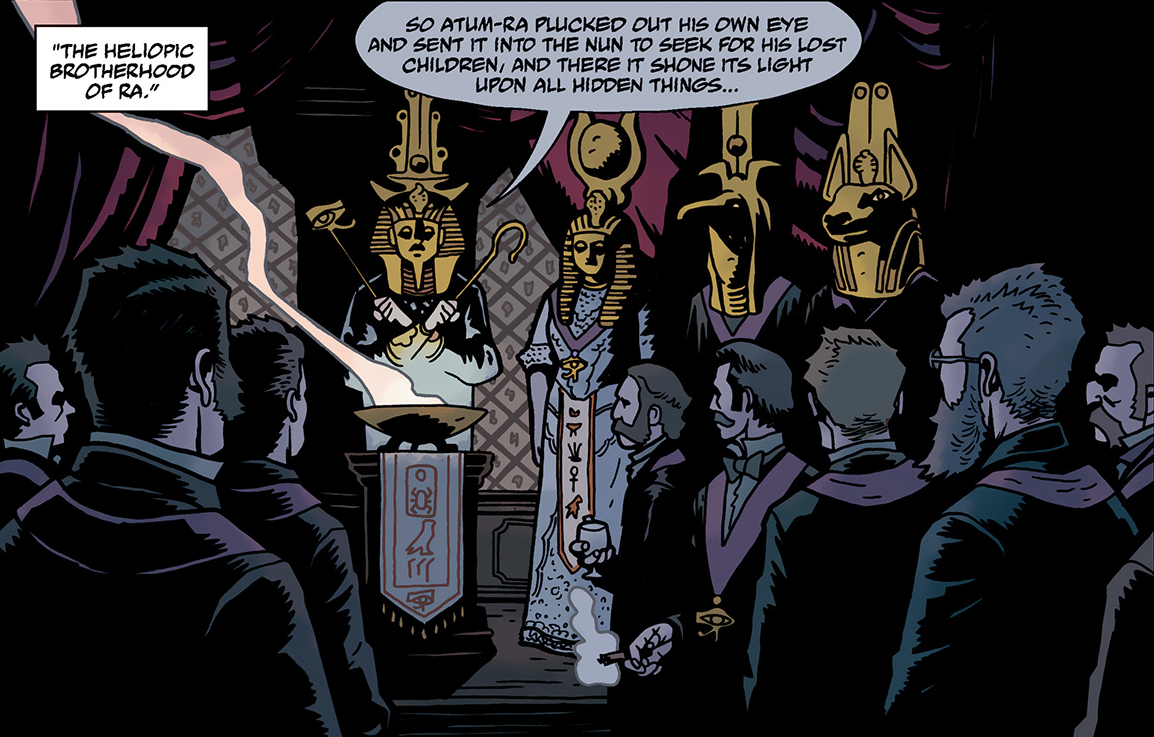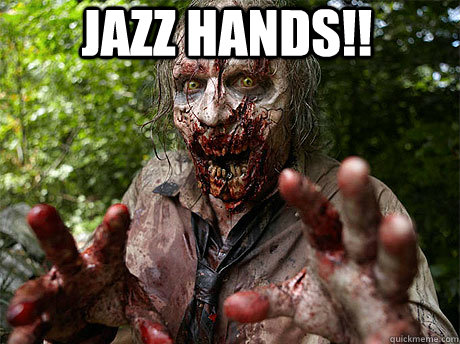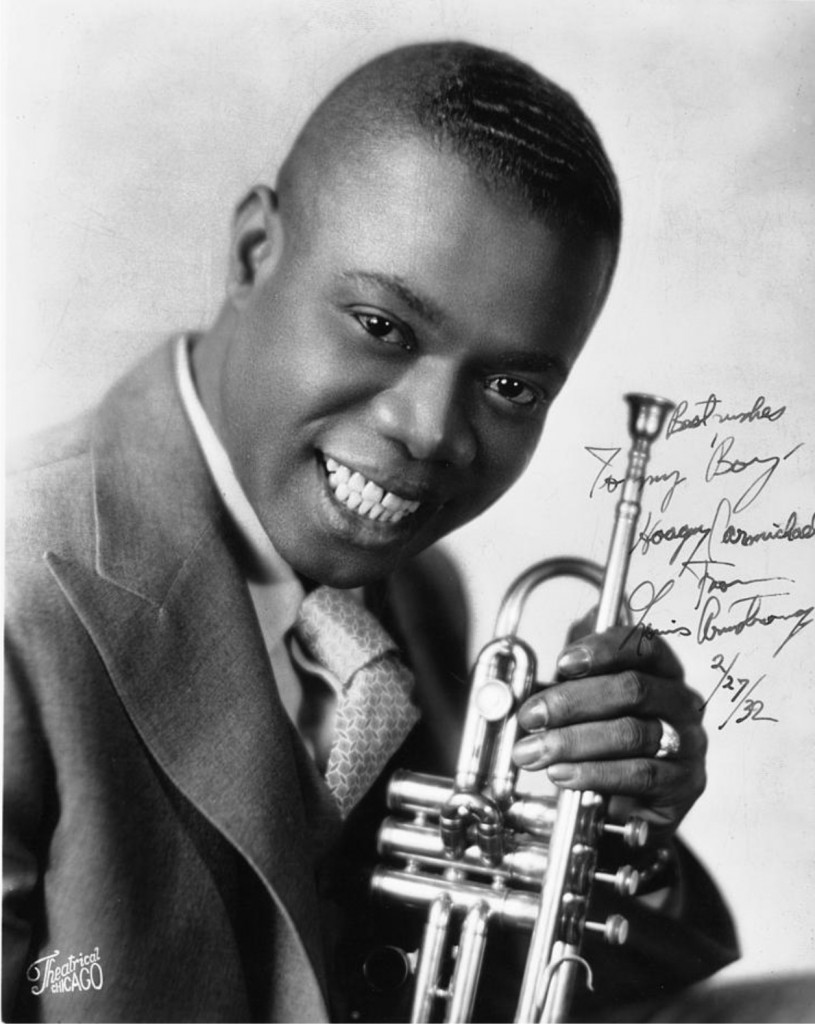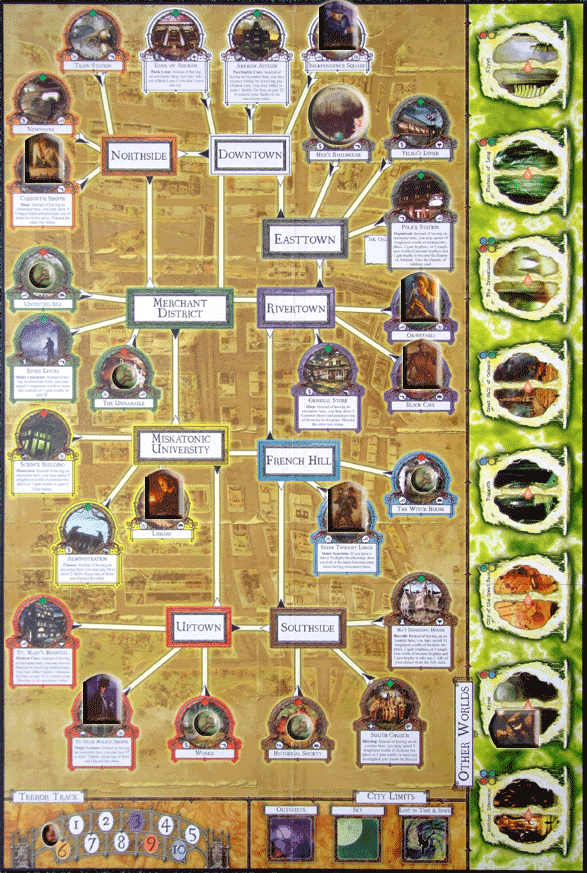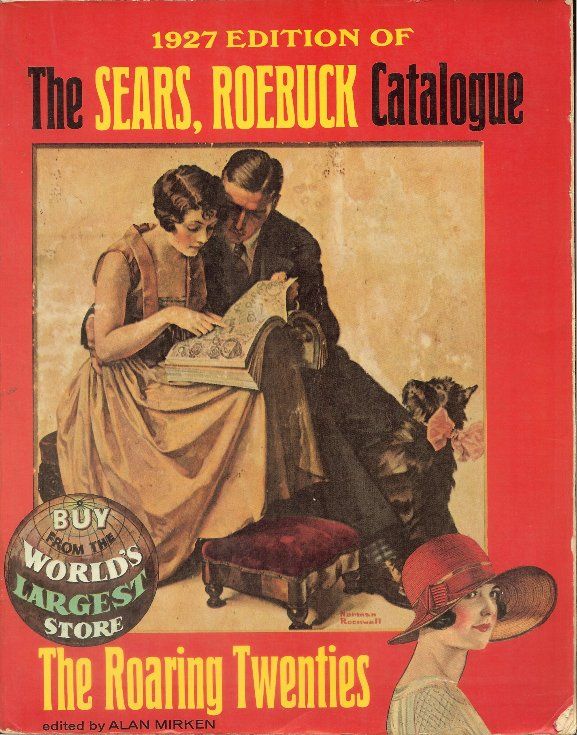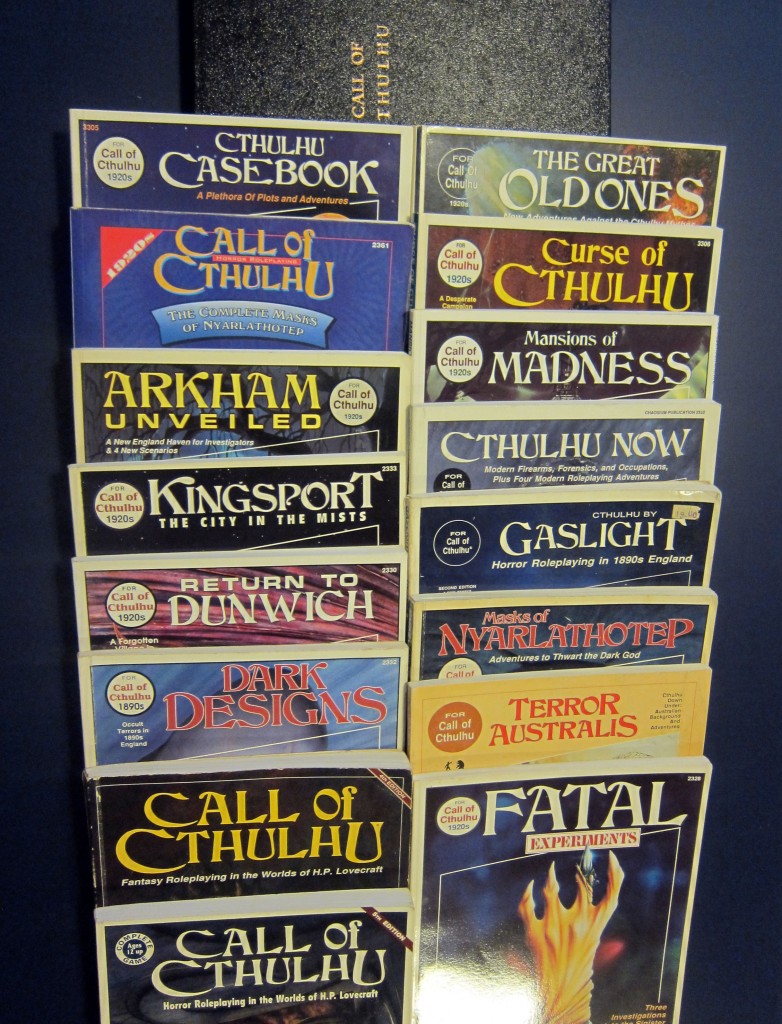Utilities
Musically, we're going to end with the opening to
Haiyore! Nyaruko-San
Comic
 Something like this would have been better. Also, extremely common.
Something like this would have been better. Also, extremely common.
FrankT:
The “comic” is two pages of self-congratulatory horse shit claiming that Call of Cthulhu is totally deadly and totally different from other RPGs. This comic probably did more for Call of Cthulhu's reputation than anything actually written in the book, because as we've already established: almost none of the fans actually
read this fucking thing and it wouldn't have done them much good if they had.
The basic structure is that the first panel claims “Call of Cthulhu is the only game where...” and then it lists off a bunch of attributes. Most of these attributes are things that can be found in other games, and almost none of the attributes are ones that Call of Cthulhu actually has. For example, it claims that the most experienced characters have the highest movement rates – something which is actually true for
many RPGs (either because movement rates level up or because movement rates are very important for succeeding as a character for whatever reason) – but of course Call of Cthulhu doesn't have variable movement rates for player characters. Hell, Call of Cthulhu doesn't have movement
rules, full fucking stop. It also claims that characters don't get combat skills in Call of Cthulhu, which is just fucking bullshit. Crap like that.
Basically, this comic was thrown around a lot as a way to “introduce players” to the game, which in turn caused a whole shit tonne of people to think that Call of Cthulhu was a much different game from what is actually written in. Despite, or perhaps because of it coming very late in the book, this comic got a lot more eyeballs than any of the actual rules, and to this day you'll see a lot of Call of Cthulhu fans who apparently claim to play this game regularly yet simultaneously claim to believe descriptions about how the game works from this comic that are demonstrably false. Since so much of a cooperative storytelling game is simply sculpted gobs of mind caulk, false advertising often makes itself true in practice. Like how people came by to tell us that
Scion was a great game despite the fact that Scion isn't actually a finished product and literally cannot be played.
AncientH:
There's a lot to bitch about as we come to the end of the book, but I'll go with: why this? I mean, we already established about a dozen pages back that Chaosium had put out over a dozen supplements and adventures. Couldn't they rip off...well, something else? Something more useful? Probably.
All I can think of is that Chaosium has been so dedicated to maintaining essentially the same ruleset for so long, they didn't want to "fuck up" and accidentally introduce anything in the core book that invalidated one of the products from yesteryear that they were still fucking selling people...and admittedly, they weren't entirely alone on that point. Shadowrun 2nd edition made very minimal changes to the Street Samurai Catalog and the Grimoire supplements to update them to the new ruleset; the books are otherwise identical - you could have covered the changes with an errata sheet. But Chaosium has always taken that to another place entirely, steadfastly remaining mired in a dinosaur of a ruleset for
decades despite the glaring flaws in it, and despite the manifold errors and omissions in the setting material. It really is the fish that absolutely refused to evolve, even as its living space shrunk because it couldn't compete.
Ready to Play Investigators
 Also ready to die.
Also ready to die.
FrankT:
So far, the game has angrily refused to actually tell you what any skill level is supposed to mean or what skill levels you're expected to have. It's the preparation of the kind of denial-in-depth that defenders of the system tend to engage in – since the game never comes clean about what any of the numbers
mean, you're not allowed to criticize the numbers for being terribly terribly stupid. It's a bullshit argument, but I've had it a bunch of times.
Anyway, the sample characters are really the game's last chance to tell you what a character is supposed to look like and how all this shit is supposed to work. Despite being on page 274, it's also one of the book's
first chances, because one of the few page citations in the entire book is near the beginning of the character creation section telling you to look here. It's actually not very helpful. The character sheets aren't complete (both in the sense that they haven't spent all their skill points and in the sense that the basic character sheet fills a page and these are only half a page because they leave off stuff), and in some cases I'm not even sure what their in-game profession was supposed to be. The
very first character has a 95% in her core skill (credit rating), and her combat skill of choice is at 60% before spending special interest skill points – so anything and everything you hear about min/maxing being not-encouraged in this game is a fucking lie from the start.
They provide 2 characters from the 1890s, 4 characters from the 1920s, and 2 characters from the 1990s. This all takes only four pages because as mentioned earlier these characters aren't complete in any way. They don't even have the sort of minimalist in media res backstories found on the back of an Arkham Horror character sheet.
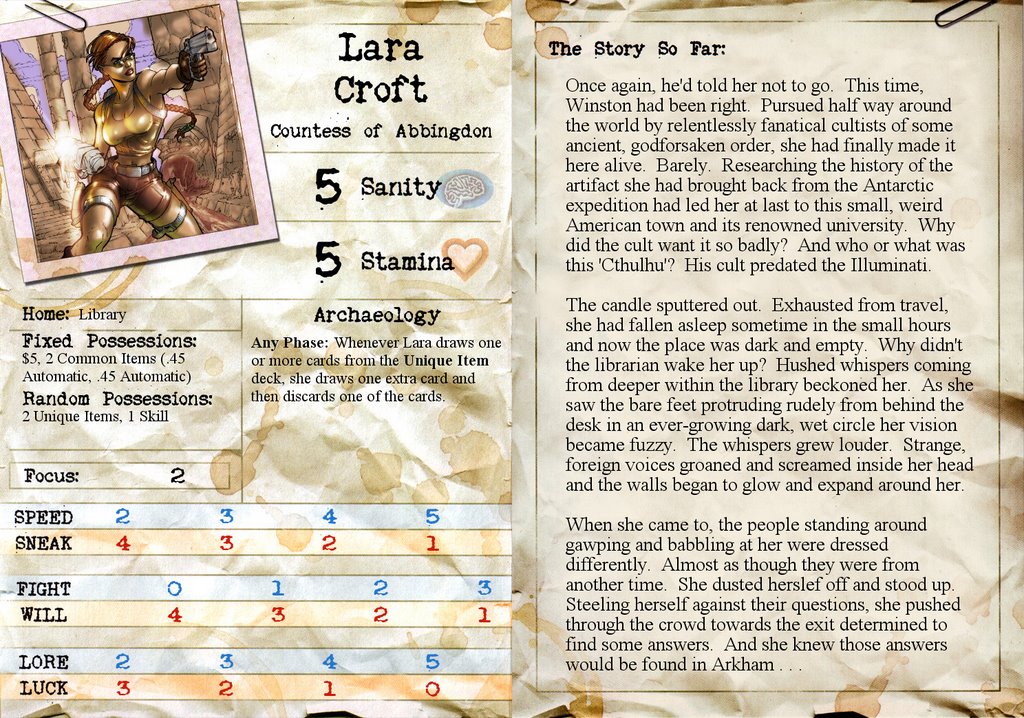 Something like this would have been so much better.
Something like this would have been so much better.
AncientH:
The only thing you have to compare these to is the NPCs from a couple chapters back, and half of
those included joke skills. I'm a big fan of examples in RPGs, because they give players and gamemasters an idea of the possible - ways to think outside the box but within the ruleset, so to speak. I could easily see a sort of PACKS thing working for Chaosium, based on profession and social background, which might actually be useful. These...aren't.
FrankT:
It's difficult to really get across how horrible these things are. Even these deliberately incomplete partial character sheets have
over two hundred numbers on them. That's not a joke or an exaggeration for effect. The most important part of the character sheet is the skills, and the 1890s investigators have 46 of them plus blank spaces for skills not everyone has (like the all-important “read ancient language” and special combat skills). You can't
make a Call of Cthulhu character sheet with a pencil and some lined paper. You can't even remember all the skills. Geology, Archaeology, History, and Anthropology are all separate skills, but Botany is part of Biology while Medicine is not. Good fucking luck with that. [AH Note: I've also seen Botany listed as a separate skill.]
For a game like this, you'd really want to have some sort of “make your own science discipline” system not unlike Shadowrun 4's Background Skills. But they didn't do that. There's a fixed list of skills, but they only tell you about enough of them that it's far too long a list for you to reasonably remember what they all are, let alone what they can do. It really does sit in the valley of minimum usability.
AncientH:
It's a fixed list of skills
when anybody remembers that. As I think we've established, Call of Cthulhu is very much a game of the mind, and the game that the players play and the designers design and the scenarists...er...scenariate...aren't all the same fucking game. There's no guidelines for making an NPC, so Keepers and adventure writers are free to give them whatever stats and skills that they want. You can't even intuit limits with that kind of thing. If you have the brass cojones to write that your character has a bag of German potato-mashers they brought back from the war...well, who is to say they don't have that? There's nothing in the rules about that sort of shit
at all. You've got some starting cash and a laundry list of undefined equipment, but money is handled so obliquely, the only reason that's in there is because of gaming instincts left over from D&D and RuneQuest.
This reminds me, if nothing else, of those people that write scenarios and character generation rules specifically for convention play. It's all fast and loose, until you get to the part where the guy or gal running the game gets to a part where they remembered (or wrote) the rules, and then they mechanic you to death with them. Restrictions on characters are made to suit the Keeper's vision of the game, not what the players want to play. It's not a good system, and it doesn't breed good playing habits.
Monster Master
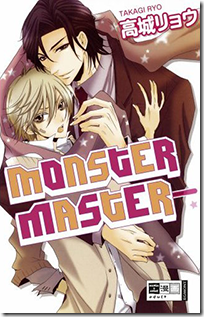 I'd like to say that the stuff in the book is less gay porn than this, but it's honestly hard to tell.
I'd like to say that the stuff in the book is less gay porn than this, but it's honestly hard to tell.
FrankT:
This six page section is supposedly called “Charts & Forms” according to the table of contents, but it doesn't actually have a heading labeled that
per se. The first form is called the “Monster Master” and combined with the book's lack of labeling the section anything else, that's what you'd assume the section was called if you were just reading it straight.
I'm not actually sure what the Monster Master form is
for. It's like an abbreviated character sheet for monsters, with three more character sheets for “Minions” that are even
more abbreviated. This is the kind of thing that like 4th edition D&D did, where monsters had simple character sheets and minions had even simpler ones. But um... this game isn't 4th edition D&D. In fact, I have no idea what the abbreviated monster or minion rules might be, because I am fucking positive that they weren't written up anywhere in this book.
Then you have “full” character sheets for each of the three eras. The 1920s character sheet has over fifty skills listed on it in addition to blank spaces for writing new ones. That's considerably more than are listed on the earlier incomplete sample characters from that era, but I'll be fucked if I'm going to do a line item comparison to figure out what's missing.
And for no particular reason, the section ends with a half page sample telegraph form from World Wide Telegraph. I don't think that's a real thing, which seems odd because it doesn't seem like it would have been that hard to dredge up a form for the American Telegraph Company or something.
AncientH:
I don't know. If someone told me this was filler from the days when people laid out these books by hand, I would believe them.
Play Aids
 In case you need aids.
In case you need aids.
FrankT:
Page 284 and 285 are a set of quick look-up rules, like you might see on the back of a DM screen for that other game. Their choices of what rules you might have to look up in a hurry are somewhat... opaque. First off, despite not being about dungeon crawls and stuff, almost the whole thing is taken up with special damage situations. Poison, acids, falling, that sort of thing. The stuff that isn't basically look-up tables for trap damage is mostly filled up with those incredibly shitty random insanity effects tables we were complaining about earlier and which even this book's reference section seems to believe you will not want to use.
 Imagine something like this, but smaller and less helpful.
Imagine something like this, but smaller and less helpful.
The remaining little bits include some doodles of some of the mystic symbols in the setting and also an announcement of which skills fit into which “skill categories.” Having just finished reading this entire book, I don't actually recall there
being any skill categories. And I'm almost positive that if it was ever mentioned, they don't make any difference. So I think like a sixth of one of the sides of the quick reference sheet is taken up by a reference to a relic rule from a different edition or a proto-rule they never even bothered fleshing out.
AncientH:
If I'm getting a little short here, it's because the headache meds are kicking in and I'm getting drowsy. The long story short on the back of the book is that all the charts and tables and stuff are back here because that's how people remember it was done back in D&D and RuneQuest, but they don't remember
why it was done. It's tradition all the way...and that could pretty much sum up the approach to this entire book. It's a rote exercise, not a creative one; there is no try, only do what has only been done before.

FrankT:
And that's the book. What follows is the Index, which as previously noted is something that the book seems to believe is part of this chapter, but obviously isn't because that's not how books work.
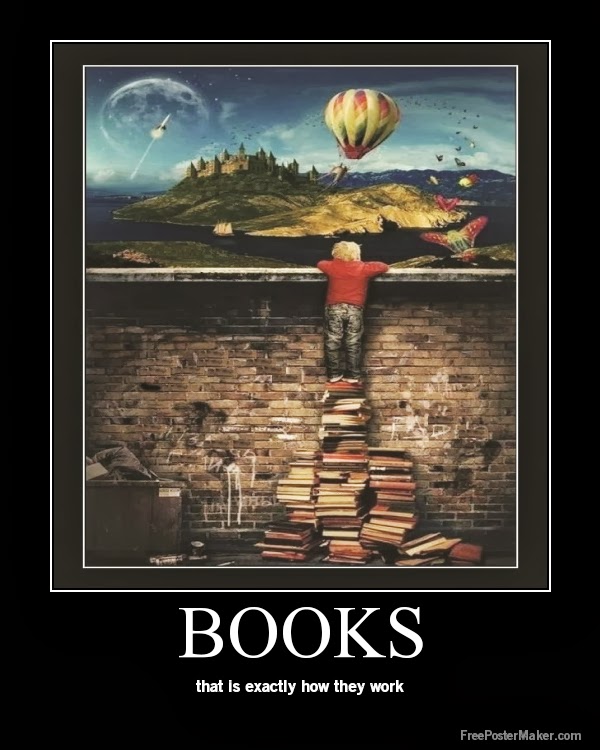 Wrapup
Wrapup

AncientH:
OKay, at this point we've been bashing this book for...weeks...and by comparison the entire game and company and fans. But I don't think the fans themselves are
entirely to blame. There is a lot of fun to be had playing the Call of Cthulhu RPG, and the RPG has been in its own way hugely influential in introducing Lovecraft and the Mythos to pop culture. There's nothing inherently wrong with people liking the game, and writing new material for it, or revisiting the old classic campaigns.
But at the same time, you do have to look at the game for what it is, and it's not pretty. It's a product of its time, and it has aged very badly - like comparing comics from the 1950s to the comics of the 2010s, you're going to recognize it's the same medium and even some of the same characters, but the whole tone and feel and quality are incomparable. Even by the 1980s standards, Call of Cthulhu was a
poorly designed game - it got by on the appeal of the licensed universe, and in a very real way it's been coasting on that ever since. The fundamental disconnect between the game people play and the actual rules is very strongly apparent after only a short time, simply because nobody plays this game as written - even the game itself isn't internally consistent on many points.
FrankT:
I am honestly amazed at how
bad this book is. Back when I played this game, I kind of assumed that we were playing something with more substance. I didn't really know all the rules, but I thought that the other people I was playing with did. Obviously, this was not the case because the rules I didn't know just plain fucking didn't exist. We were basically playing magical teaparty and to the extent play was in any way structured it was held together with mind caulk and the personal charisma of our keeper. This is exactly as disappointing as rewatching a horror movie that scared me as a child – only now it's a lack of rules and organization rather than cheesy special effects and bad acting.
Call of Cthulhu isn't even a game. It's a pile of essays and design specs requesting that a game be made. In the meantime, people are basically just supposed to tell each other scary stories and ad hoc a game-like structure while doing so.
I'm not surprised or even offended that this is what Call of Cthulhu looked like in the early eighties, but the fact that it was still coming out with editions that were were still like that years after I outgrew the “game” is beyond comprehension.

AncientH:
I can't say the game is still like this, because the 7th edition - while not
released released yet, was sent out to the kickstarter backers a couple weeks ago, and I know that they brought some new people on board to fiddle with the dice mechanics, which set many an old fan's teeth on edge. I don't have high hopes for it, but I have some small hopes for it, because in looking at v5.3 vs v6 - well, the rules and content might not have changed, but someone at least dumped it into a PDF file and updated the layout. That was a big shift, at least in terms of CoC, and there have been some actual playable games
based on CoC that have been released in the last few years so maybe...just maybe...7th edition will be where CoC should have been about fifteen years ago. I don't have high hopes, though.
FrankT:
The Mythos genuinely has legs. The basic concept of horror that is completely divorced from religious themes tied into an occult that honestly doesn't care about you at all is truly compelling. But Call of Cthulhu is a genuinely bad game. It didn't stand out as especially bad in the eighties, but only because the competition was just generally worse. In the nineties and especially in this century it's just ridiculous. Now, many people have been enticed by the call of Call of Cthulhu and decided that what they needed to do was to make their own game based on it. And that's where we get stuff like
Cthulhutech and
Unknown Armies – but the fact is that
these games are also terrible. Call of Cthulhu is simply a bad foundation upon which to try to build a game. There was a time when RPGs were young and nobody knew any better that this wasn't terribly apparent, but decades have passed and no one has any fucking excuse anymore.
A game
like Call of Cthulhu, or rather a game like what Call of Cthulhu
wants to be is certainly something that people want. That's probably why Call of Cthulhu keeps not going away despite being objectively terrible in almost every way it is possible for an RPG to be objectively terrible. But really people just need to nuke this from orbit and start over from scratch. Arkham Horror, which I remind you is a
board game, is a much better RPG. You could really just start with Arkham Horror and add narrative elements to it until it was as open ended as Dungeons & Dragons and you'd end up with an RPG that was not only better than the Call of Cthulhu we have, but better than the Call of Cthulhu that we are
ever going to get from people attempting to incrementally evolve this unfinished piece of crap.
People want to do horror stories in the early twentieth century. People want to do modern horror stories. People want to fight horror monsters in the science fiction future. These don't necessarily have to be the same game, but if they are ever going to be good they have to start from other systems that work instead of this failtastic BRP garbage.
AncientH:
We do these OSSRs in part because...well, this is a forum about game design. It might have started with us being snarktastic and making fun of old products, but I think it's developed somewhat to the point where we can give some actual insight and analysis to the product. Call of Cthulhu is a big game to do. Not a shelfbuster by any means, but the conceptual space it occupies in RPG is significant - one of those games that White Wolf never really tried to mimic or devour, one that
nobody really made a competitive product for, because anything close to CoC was probably just a side-project or altsetting for the game, and even those like CthulhuTech tended to turn out terribad in the end. We do these OSSRs at least in part to look critically at games and see how we would
not make the same mistakes, which is an aspect of game design that seems to be sadly lacking in many game designers...including those at Chaosium.
So, I hope that was worth it, and Ph'nglui mglw'nafh Cthulhu R'lyeh wgah'nagl fhtagn.
